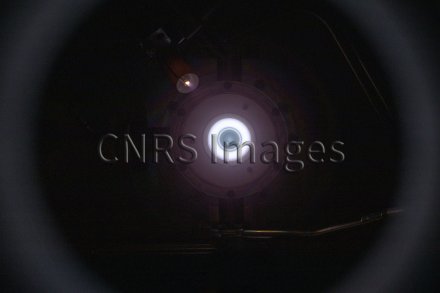Production year
2019

© Frédéric MALIGNE / LAPLACE / CNRS Images
20210117_0024
Propulseur de Hall bi-étage ID-Hall en fonctionnement. L’objectif d’un propulseur bi-étage est de pouvoir ioniser en partie le gaz (ou ergol) par une source additionnelle, ici une source inductive. Il sera ainsi possible de faire fonctionner le propulseur de Hall avec des gaz plus difficiles à ioniser mais plus légers et moins couteux que le xénon, par exemple le krypton ou l’argon. Les propulseurs de Hall sont utilisés sur les satellites pour le maintien sur orbite, les transferts d’orbite ou comme système propulsif sur les sondes spatiales.
The use of media visible on the CNRS Images Platform can be granted on request. Any reproduction or representation is forbidden without prior authorization from CNRS Images (except for resources under Creative Commons license).
No modification of an image may be made without the prior consent of CNRS Images.
No use of an image for advertising purposes or distribution to a third party may be made without the prior agreement of CNRS Images.
For more information, please consult our general conditions
2019
Our work is guided by the way scientists question the world around them and we translate their research into images to help people to understand the world better and to awaken their curiosity and wonderment.